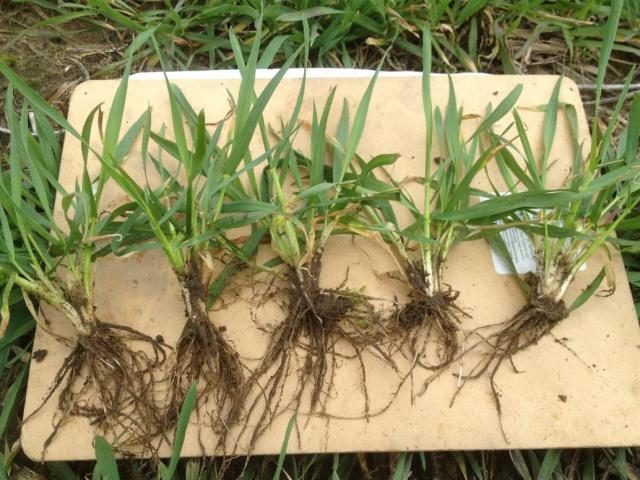Between planting in the fall and Feekes 4 growth stage (beginning of erect growth) in the spring, winter wheat is vulnerable to environmental stress such as saturated soils and freeze-thaw cycles that cause soil heaving.
All of which may lead to substantial stand reduction, and consequently, low grain yield. This year, many areas of Ohio have been wet and wheat plants look poor. However, a stand that looks thin in the spring does not always correspond to low grain yield. Rather than relying on a visual assessment only, we suggest counting the number of wheat stems to help estimate wheat grain yield.
Wheat Stem Count Method

Figure 1. Wheat main stem plus tiller totaling two stems. Measurement tool used to consistently count the number of wheat stems in one linear foot of row.
Wheat stems (main stem plus tillers) should be counted at Feekes 5 growth stage (leaf sheaths strongly erect) from one linear foot of row from several areas within a field (Figure 1). In Ohio, Feekes 5 growth stage is generally early to mid-April, depending on the weather and location within the state.
After counting the number of stems from several areas within the field, calculate the average. Then, use Figure 2 to estimate wheat grain yield. For example, if there was an average of 25 stems in a linear foot of row, median (50th percentile) yield is estimated to be 78 bu/acre with a range in yield of approximately 65 to 85 bu/acre (25th to 75th percentile). Figure 2 was generated using field data from 9 Ohio environments. We will continue to revise this figure as we conduct additional field research projects.
Limitations
 Figure 2. Box-and-whiskers plot showing minimum, 25th percentile, 50th percentile, 75th percentile, and maximum wheat grain yield for a range of stem count measurements from 9 environments in Ohio. Outliers are shown as a dot. Shaded area contains 50% of the yield range (25th to 75th percentile) for each given stem count range.
Figure 2. Box-and-whiskers plot showing minimum, 25th percentile, 50th percentile, 75th percentile, and maximum wheat grain yield for a range of stem count measurements from 9 environments in Ohio. Outliers are shown as a dot. Shaded area contains 50% of the yield range (25th to 75th percentile) for each given stem count range.





